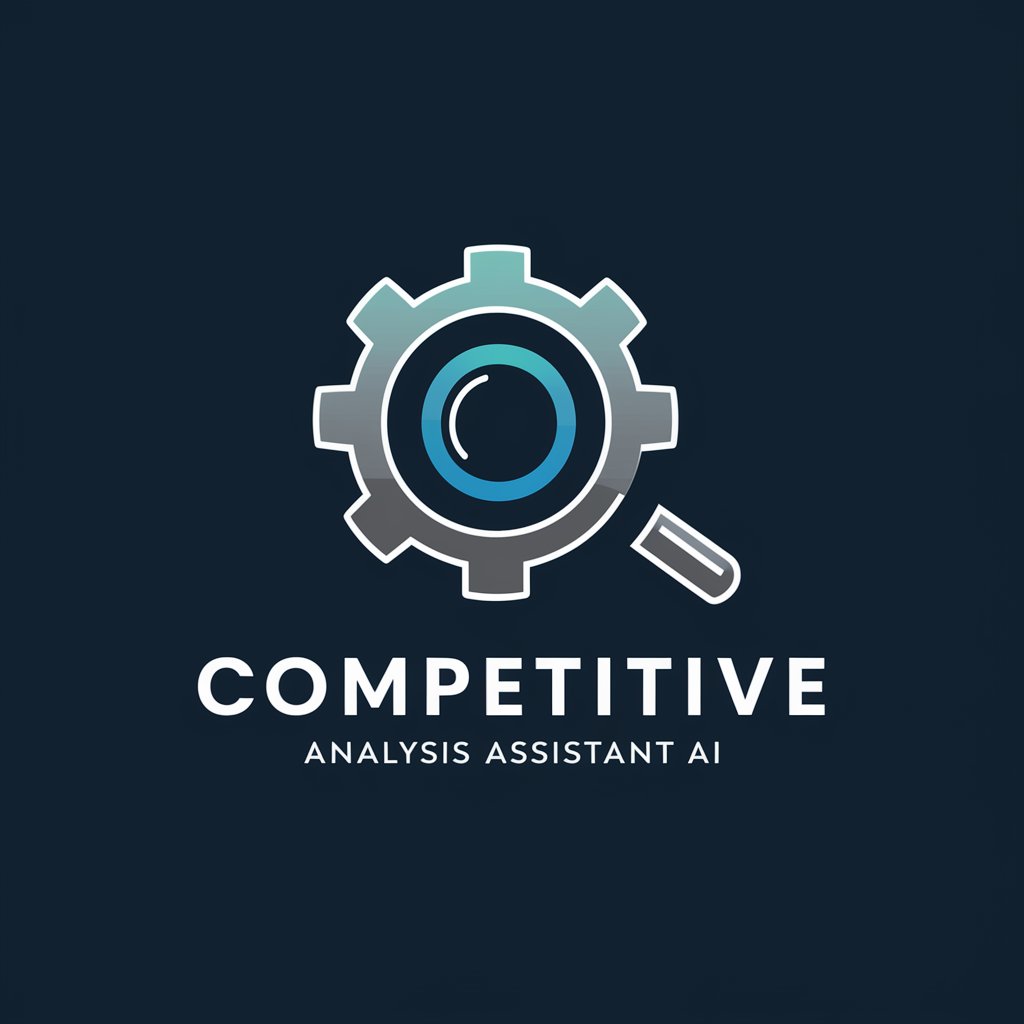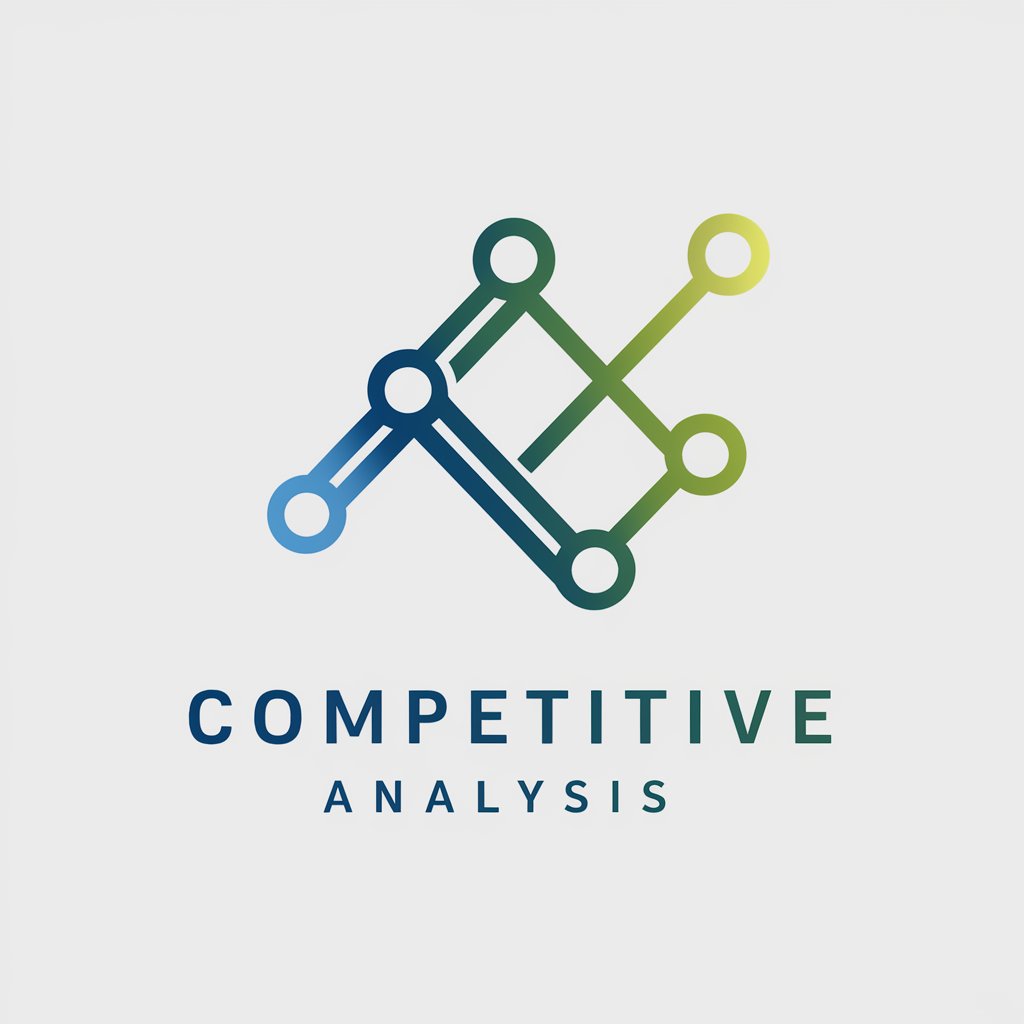
Marketing Competitive Analysis - Market Strategy Insights

Welcome! Let's enhance your brand's competitive edge.
AI-Powered Competitive Edge in Marketing
Analyze the competitive landscape of...
Develop a brand positioning strategy for...
Refine the core messaging of...
Identify unique benefits for...
Get Embed Code
Overview of Marketing Competitive Analysis
Marketing Competitive Analysis is a strategic approach focused on evaluating a company's position in the marketplace in comparison to its competitors. It involves a detailed examination of the brand's product offerings, market positioning, and messaging strategies. The purpose is to identify strengths, weaknesses, opportunities, and threats in the competitive landscape. This analysis helps in refining marketing strategies, enhancing brand distinctiveness, and gaining a competitive edge. For example, a beverage company might use competitive analysis to understand how its brand perception as a luxury or value product compares to that of competitors like Coca-Cola or Pepsi. Powered by ChatGPT-4o。

Key Functions of Marketing Competitive Analysis
Brand Positioning Analysis
Example
Comparing a tech company's product line to its rivals to determine if it's perceived as more innovative or cost-effective.
Scenario
A smartphone manufacturer evaluates whether its products are seen as cutting-edge (like Apple) or budget-friendly (like Xiaomi).
Brand Messaging Scrutiny
Example
Assessing the effectiveness of a fashion brand’s advertising campaign in comparison to competitors.
Scenario
A luxury fashion brand examines its promotional materials to ensure they convey exclusivity and quality, distinct from fast-fashion brands like H&M or Zara.
Unique Benefits Identification
Example
Highlighting a car manufacturer's advanced safety features that set it apart from competitors.
Scenario
A car brand like Volvo identifies safety as its unique selling proposition, differentiating from rivals focusing on performance or luxury.
Product or Service Comparison
Example
Evaluating a hotel chain's amenities and services against its major competitors.
Scenario
A boutique hotel chain assesses how its personalized services and unique experiences compare to larger chains like Marriott or Hilton.
Content Strategy Analysis
Example
Reviewing the social media engagement strategies of different skincare brands.
Scenario
An organic skincare brand examines how its content marketing focuses on education and authenticity, contrasting with competitors who prioritize celebrity endorsements.
Media Planning Evaluation
Example
Analyzing the balance between organic and paid media in a retailer's marketing plan.
Scenario
An e-commerce platform compares its use of influencer partnerships and paid ads with Amazon’s strategy, to optimize its media spending.
Seasonal Marketing Assessment
Example
Examining how a sports brand adjusts its marketing strategies during major sports events.
Scenario
A sports apparel company like Nike analyzes its seasonal campaigns during the Olympics compared to Adidas or Under Armour.
Competitive Landscape Mapping
Example
Exploring indirect competitors of a fast-food chain.
Scenario
McDonald’s considers how casual dining options like Olive Garden might impact its market share, not just direct competitors like Burger King.
Cultural Relevance Analysis
Example
Assessing how a brand's story aligns with current societal trends and values.
Scenario
A sustainable clothing brand evaluates its alignment with environmental trends, differentiating from brands not emphasizing sustainability.
Target User Groups for Marketing Competitive Analysis Services
Emerging Brands
New companies seeking to establish a foothold in a crowded market can benefit by understanding the competitive landscape and identifying unoccupied niches.
Established Enterprises
Large corporations can use competitive analysis to maintain their market position, innovate effectively, and anticipate market shifts.
Marketing Agencies
Agencies require in-depth knowledge of various industries to craft effective strategies for their clients and differentiate them from competitors.
Product Managers
Individuals responsible for guiding a product's direction can leverage competitive analysis to inform development and marketing strategies.
Business Analysts
Analysts can use competitive insights to advise companies on market trends, potential investments, and strategic decisions.
Entrepreneurs
Start-up founders need to understand their competitive environment to position their venture effectively and attract investment.

Guidelines for Using Marketing Competitive Analysis
Begin with a Free Trial
Start by visiting yeschat.ai for a hassle-free trial experience without the need for login or subscribing to ChatGPT Plus.
Identify Your Competitors
Clearly define who your direct and indirect competitors are. This can involve market research and understanding the broader industry landscape.
Gather Comparative Data
Collect data on competitors' products, market presence, branding, and customer feedback. Use this data to benchmark your own brand's performance.
Analyze and Identify Gaps
Evaluate the strengths and weaknesses of your competitors compared to your brand. Look for market gaps or areas of opportunity.
Develop Strategic Actions
Based on your analysis, formulate strategic actions to enhance your brand’s distinctiveness and competitive edge.
Try other advanced and practical GPTs
Fakederico Garcia Lorca
Reviving Lorca's Verse with AI

Data Magician
Empower decisions with AI-driven insights

English Buddy
Master English with AI Assistance

Echohive Video Finder
Navigate AI Learning with Precision

DEEA
Empowering your data science journey with AI.

Spreadsheet Composer
Transform data into spreadsheets effortlessly with AI

Scholarly Scribe
Refining Academic Writing with AI

夢占いくん
Unlock Your Dreams with AI-Powered Insights

Therapy Prep Pal
Reflect, Prepare, Grow with AI

Active Listener Coach
Empower Communication with AI

ZenGen
Enlighten the mind, one koan at a time.

SideStep GPT
Unleashing Innovation, Redefining Markets

FAQs on Marketing Competitive Analysis
What is Marketing Competitive Analysis?
Marketing Competitive Analysis involves examining your brand's positioning, messaging, and product offerings in comparison to your competitors, to identify strengths, weaknesses, and opportunities for differentiation.
How can I use Competitive Analysis to improve brand positioning?
By understanding how your brand is perceived relative to competitors, you can adjust your positioning - whether as a luxury or value brand, targeting specific demographics, or highlighting unique selling points.
What role does target market analysis play in Competitive Analysis?
Analyzing the target market helps in understanding the demographic, geographic, and psychographic profiles your competitors are targeting, allowing you to identify niche markets or adjust your targeting strategy.
How important is content in Marketing Competitive Analysis?
Content is crucial. It's important to assess how your competitors are using content to engage their audience, and how you can utilize authentic, value-driven content to enhance your brand’s appeal and differentiation.
Can Marketing Competitive Analysis aid in adjusting pricing strategies?
Yes, analyzing how your competitors price their products or services can provide insights into market expectations and help you position your offerings competitively.






